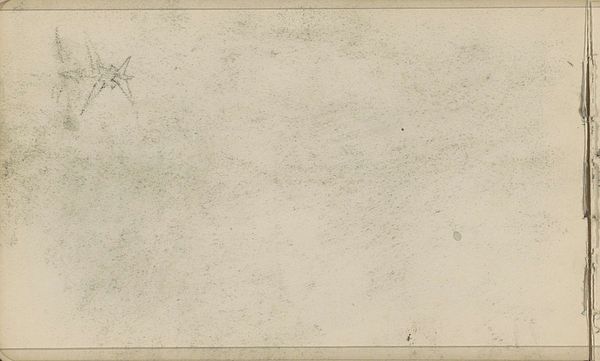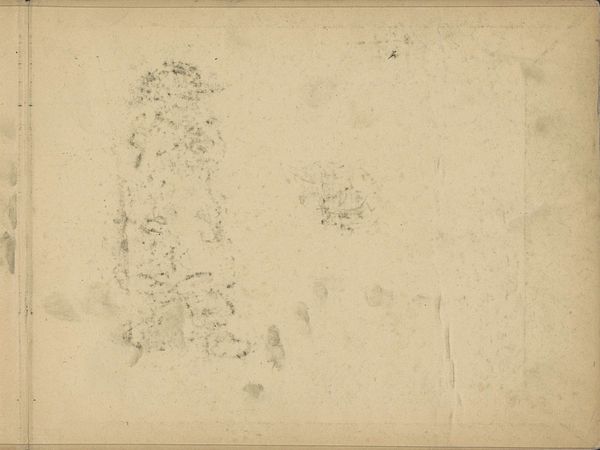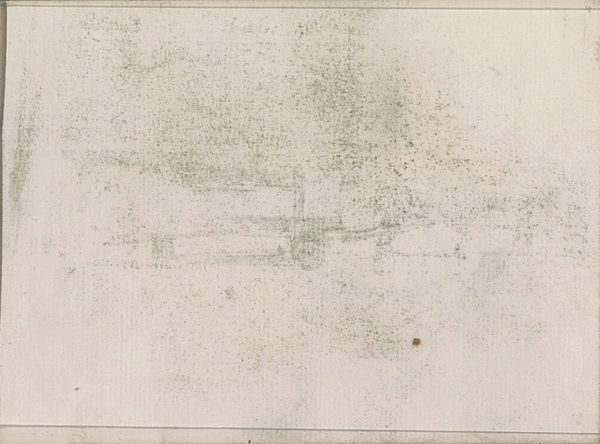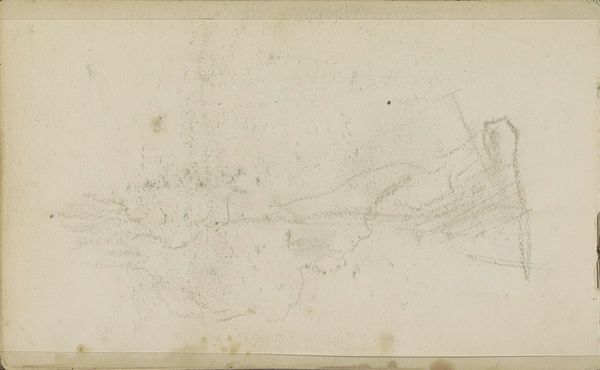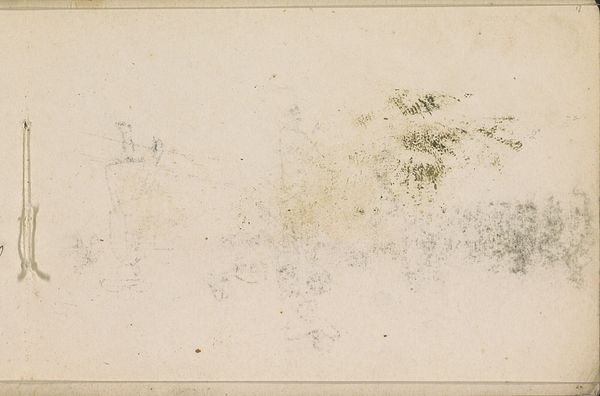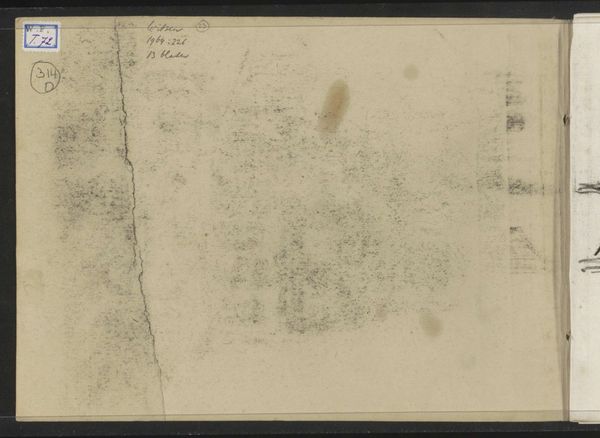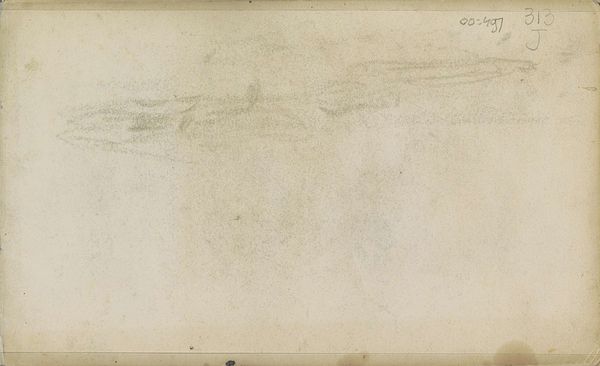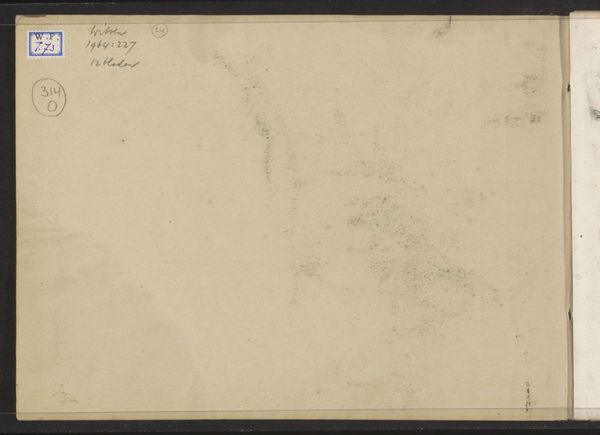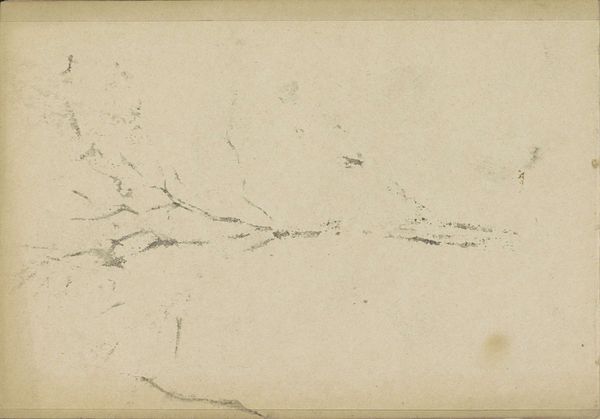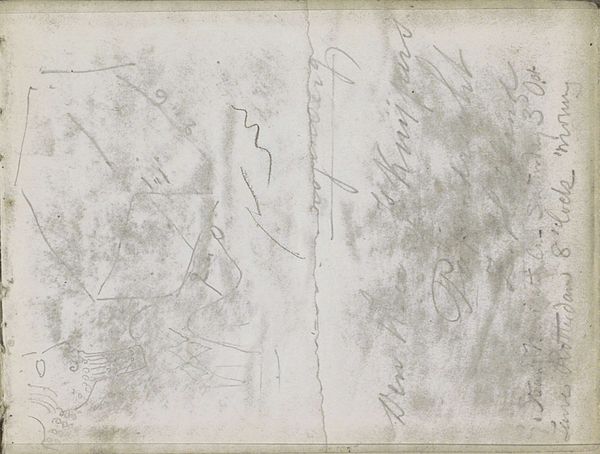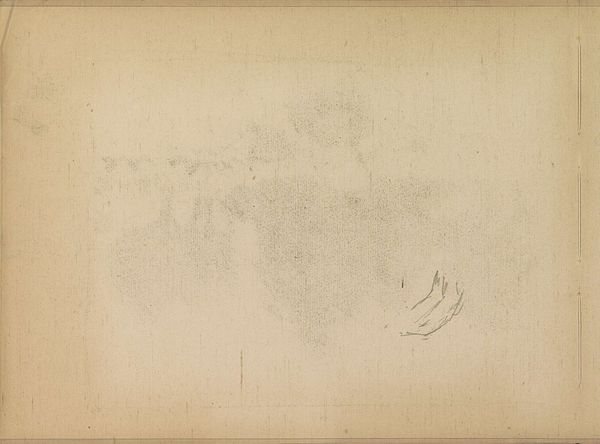
drawing, mixed-media, paper, ink, pencil
#
portrait
#
drawing
#
aged paper
#
mixed-media
#
paper
#
ink
#
pencil
#
abstraction
Copyright: Rijks Museum: Open Domain
Curator: Today we're looking at "Annotaties" a mixed-media drawing, made with pencil and ink on paper by Johan Antonie de Jonge sometime between 1881 and 1927. It is described as a kind of abstract portrait. Editor: My initial feeling is a sense of transience, a ghost of something written, seen, or thought. The aging of the paper itself speaks volumes about the passage of time and how it interacts with the materials that compose it. Curator: Absolutely. De Jonge clearly wasn’t concerned with perfect representation, but with something more fleeting, a trace. I find that abstraction compelling—it encourages us to consider what the image is hinting at, perhaps on a subconscious level. The annotations feel almost like echoes. Editor: Consider the economic and social conditions that allowed for such introspection, such an exercise in recording ephemeral thoughts. Paper, ink, even the time to create this, weren’t universally accessible. Who had the luxury of “annotating” life like this? What kinds of labor made this possible? Curator: A vital point. And I think that’s visible in the careful handwriting. Each inscription and form bears the cultural imprint of that era. This could be a memento mori, or even just a way for de Jonge to organize his experiences through writing and sketch—an approach reminiscent of older illustrated bestiaries or personal encyclopedias, if those inscriptions are intended as notes about sketches located elsewhere. Editor: Note too how the image hints at being more than what it presents. The faint bleed-through, the stains—each mark speaks of process, of the handling and history embedded in the material itself. Curator: Ultimately, this "portrait" whispers of layers—historical, emotional, material. It asks us to look closer, to feel the echoes, to understand what may be remembered. Editor: I concur. It reminds us that every artifact carries not just intended meaning, but the accumulated residues of its making and being, a conversation between artist, materials, and time.
Comments
No comments
Be the first to comment and join the conversation on the ultimate creative platform.
